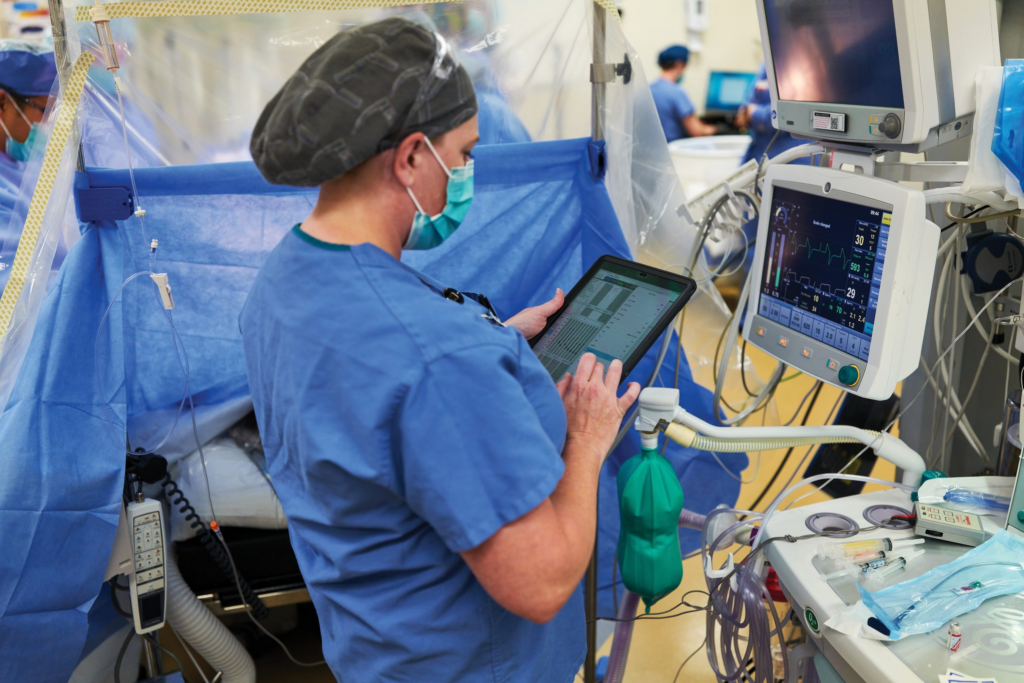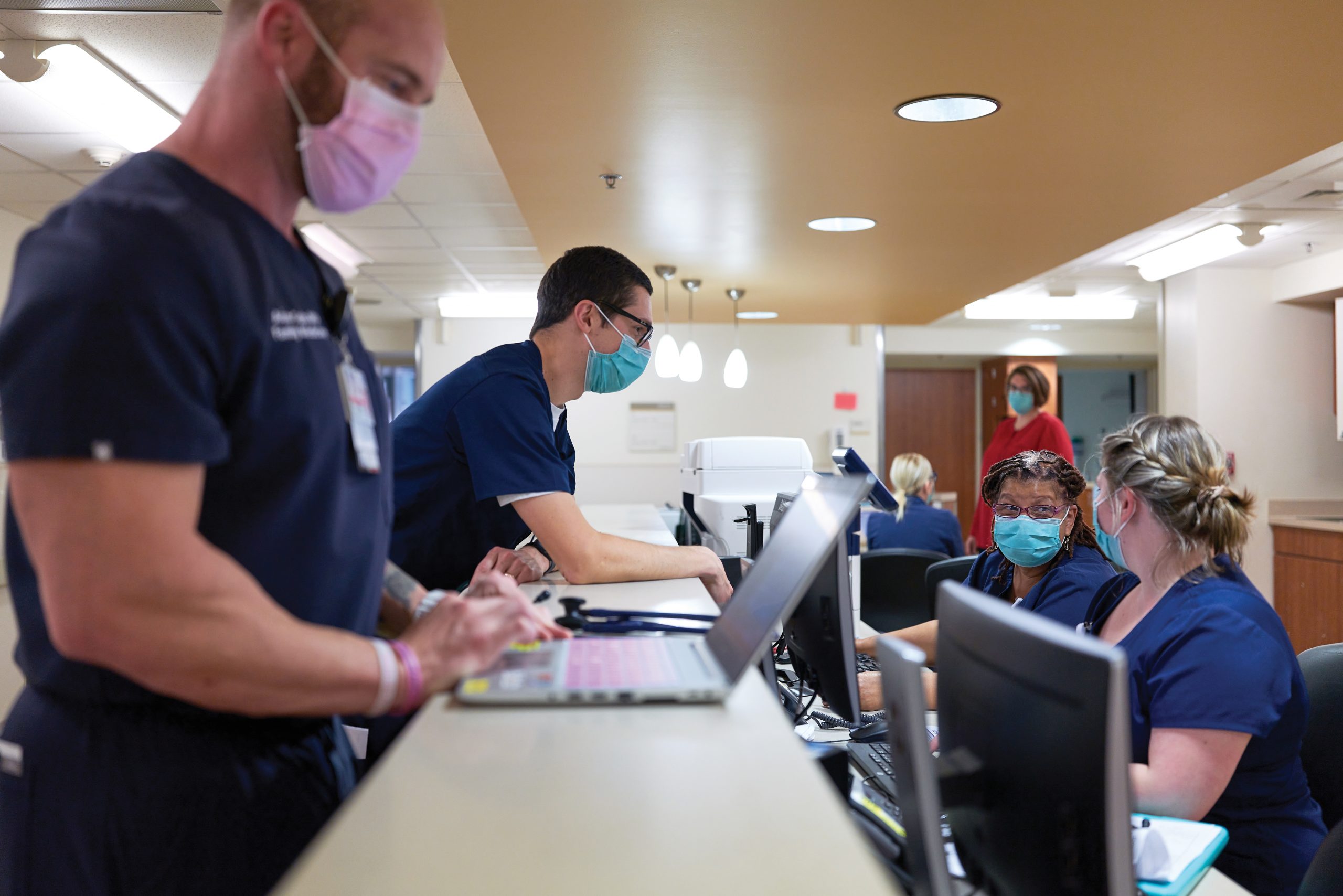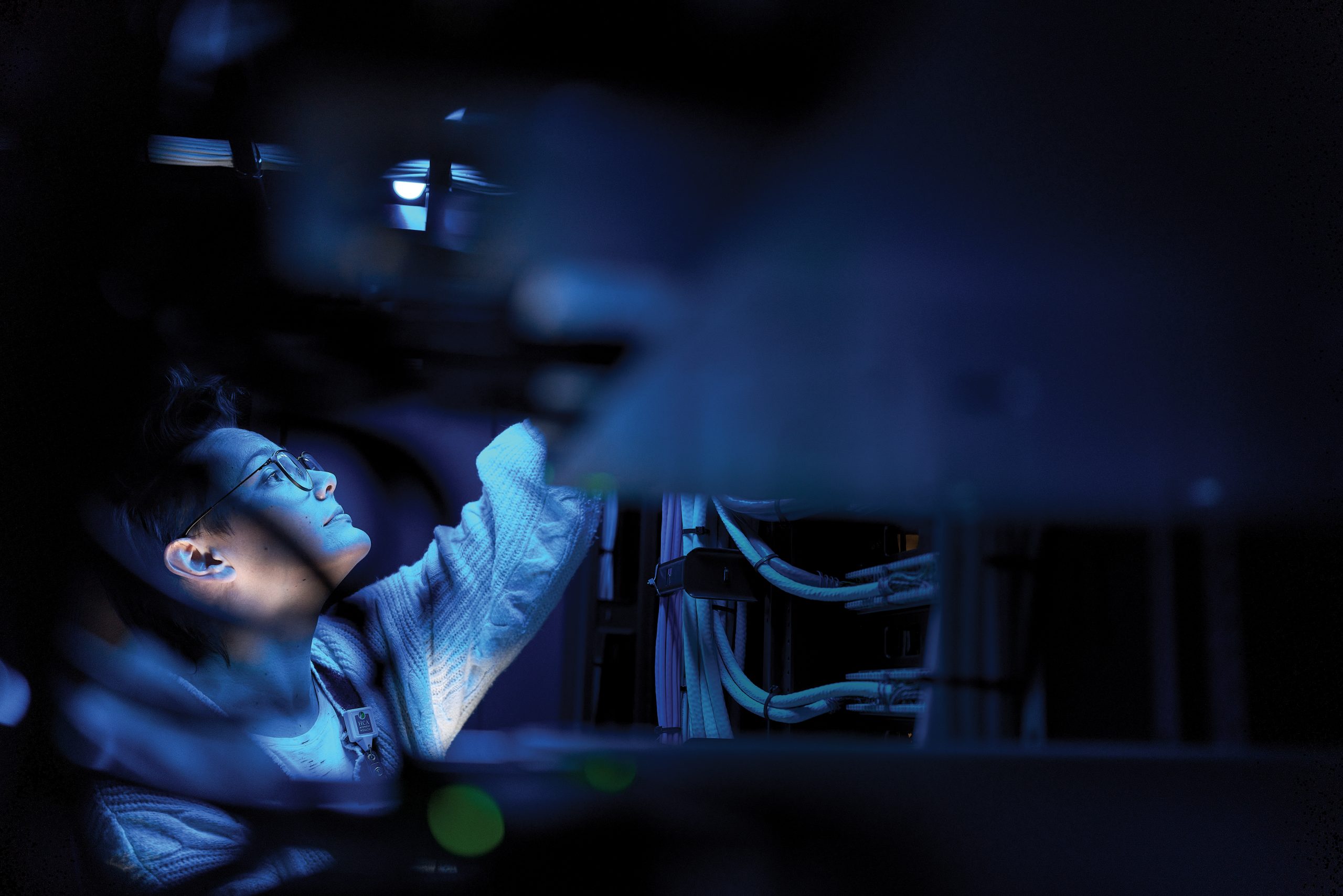When HCA Healthcare was founded in 1968, we set out to be a different kind of healthcare system. We strived to harness the combined expertise and resources of multiple hospitals to help our frontline caregivers provide high-quality, patient-focused care in a way no single hospital could do alone. Today, that original vision is thriving, and the key to its success is innovation.

The healthcare industry can be a challenging space to innovate because it is extremely complex, often fragmented, and the stakes could not be higher. But that is also why it is the most critical. Our mission – to care for and improve human life – is at the core of everything we do, and innovation is an integral part of how we achieve it.
POWERED BY DATA FROM 35 MILLION ANNUAL PATIENT ENCOUNTERS
One of the foundational ways we innovate at HCA Healthcare is by operating as a learning healthcare system. Our network cares for approximately 35 million patient encounters each year, and we have one of the largest collections of clinical data in the country.
To synthesize this vast data, HCA Healthcare’s Information Technology Group built a Clinical Data Warehouse, which receives and securely maintains information from the electronic health record and other data sources. The Clinical Data Warehouse is the heart of our data ecosystem. It helps us aggregate and analyze de-identified data in real time and provides actionable information to hospital leaders and care teams, so they can continue to provide high-quality, patient-centered care.
This knowledge is shared across the network with every one of our facilities, creating a connected environment that is constantly improving for the benefit of each patient who comes through our doors.
Our large-scale health services research has helped us better understand how to improve the health of newborns, reduce healthcare-associated infections, and identify sepsis earlier. These learnings have gone on to inform not just care protocols and operations, but also industry standards, resulting in measurable patient care improvements within and beyond HCA Healthcare.
For example, one of the first enterprise predictive analytics tools we developed in-house was SPOT (Sepsis Prediction and Optimization of Therapy). SPOT is a system to help clinicians more quickly identify patients with sepsis.
Building upon the capabilities of SPOT technology, HCA Healthcare developed its Next-gen Analytics for Treatment and Efficiency (NATE) platform. Early in the COVID-19 pandemic, when little was known about the effects of the virus, NATE provided analytic insights to assist clinicians in applying the appropriate clinical protocol for mechanically ventilated patients. The ability to closely monitor key data points resulted in decreasing patients’ length of stay and helping to increase survival for COVID-19 in HCA Healthcare facilities by 28%.
Looking ahead, the promising potential benefits of machine learning and AI require large amounts of data to be able to learn and recognize patterns. The scale and interoperability of our system allows us to advance data collection, machine learning and AI enabled solutions. Through a new partnership with Google, we are working with their cloud team to create a secure and dynamic data analytics platform that will enable the development of next generation operational models, all with the goal of enabling better patient care to be delivered more efficiently, more consistently and more transparently.

INNOVATION LABS FOR TESTING – AND THEN SCALING
While innovation has always been part of our DNA, we recently decided to double-down on our identity as a learning healthcare system by launching a new strategic pillar in 2021: Care Transformation and Innovation (CT&I). CT&I aims to build the hospital of the future by partnering with our clinicians to integrate technology into care delivery, developing and scaling bold innovations that address both current and anticipated challenges the industry is facing.
CT&I works directly with frontline clinicians to identify areas for improvement and then test, measure and scale solutions. Currently, the team is testing new technology and processes that can help reduce the administrative burden for labor and delivery clinicians so they can spend more time caring for patients. One issue that our frontline caregivers identified was that L&D sees a high variation in patient needs. This can create challenges for care teams on days when the volume is higher than expected, for example.
In order to address the issue, we utilized our data on deliveries in our hospitals from the prior year and built an algorithm designed to predict information about the patients our department will have in the next 60 days. This includes both volume and the type of patient – who is going to have a routine delivery versus someone who might have a more complex delivery that needs a more specialized level of care. This tool helps us ensure that we have the right team of caregivers on a given day or shift to provide our patients the best possible care. We are using technology to ease the staff scheduling burden and help our care teams spend more time at the bedside.
Our CT&I work happens at our dedicated Innovation Hubs and Innovation Departments, locations at our hospitals around the country specifically designed for this. The solutions eventually will be deployed across the enterprise, further enabling us to use our resources and national reach to learn, innovate and improve.

THE FUTURE OF HEALTHTECH
As technology rapidly advances, HCA Healthcare continually explores the latest and emerging trends. We are excited about the potential for wearable technology to help improve patient care and time-consuming processes like documentation that can be partially automated.
In the future, another technology we see having a real, useful application in the healthcare space is a digital twin – a virtual model of our hospital environment designed to reflect the real thing. These digital twins would allow us to test changes in workflows and their ripple effect across hospitals in a simulated environment, allowing us to try bolder innovations and test and fail faster than we currently can in a real-world situation to more quickly identify innovative solutions.
The innovation that is currently happening and will happen in the future comes back to our mission of caring for and improving human life. Technology is a key enabler of how we take care of our colleagues and deliver high quality care to our patients and communities, and we will continue to build on our legacy of innovation and grow as a learning healthcare system in service of that mission.














